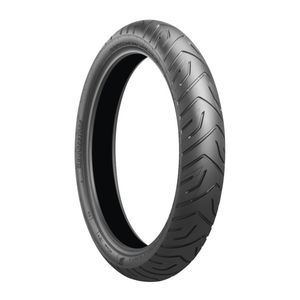We had been riding for all of 20 minutes when Steve Kamrad shoved a GoPro in my face and asked for my initial impression of BMW’s F 750 GS for a video he was putting together.
“I hate it.”
Now before you go getting the wrong idea about this bike, let me back up for a moment and set the scene.
Steve and I were standing on the side of a silty dirt road on top of a mountain pass outside of Gateway, Colorado. We were atop of a pair of F 750 GSes wearing street tires and no crash protection. And to top it off we had come to a stop in a particularly sandy corner. Not exactly ideal conditions for what is arguably the most street-focused BMW with GS in its name.
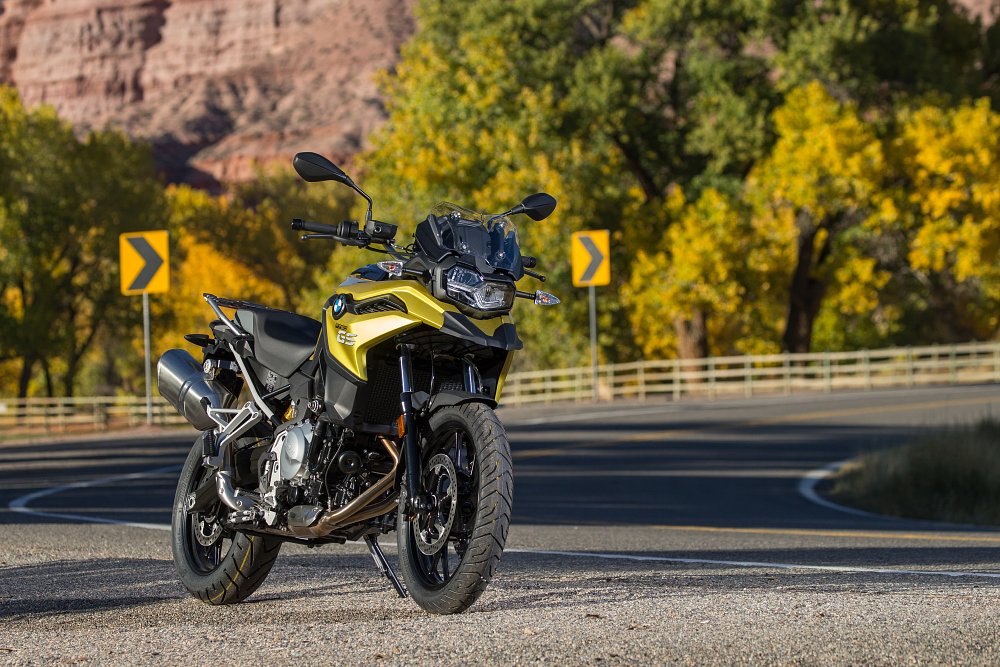
The F 750 GS
If you’re unfamiliar with the article I wrote on the F 850 GS, I’d recommend taking a minute to glance it over as a starting point for the changes BMW made to their parallel-twin-equipped F line. Rather than rehash that information, I am going to use this section to focus on the main differences that set this bike apart from its bigger brother, the F 850 GS.
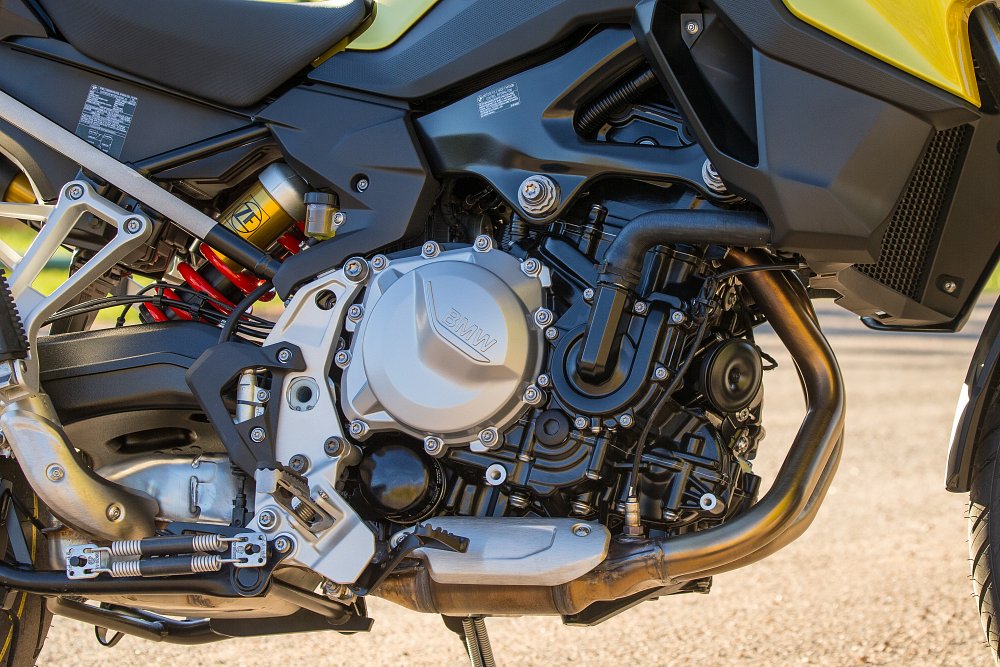
While both bikes are powered by BMW’s new 853 cc twin, the F 750 GS gets a different tune, which lowers power output. Utilizing different cams, intake, and ECU, the F 750 GS claims 77 horsepower at 7,500 rpm and 61 foot-pounds of torque at 6,000 rpm. This is down from the F 850 GS’s 90 horsepower and 63 foot-pounds of torque.
In base form, the F 750 GS is equipped with ABS, Traction Control (ASC), and two Ride Modes: Rain and Road. However, BMW Motorrad will only be importing to America bikes with the Select Package, which upgrades ABS and ASC to ABS Pro and Dynamic Traction Control (DTC). The main difference is that an Inertial Measurement Unit (IMU) is added, which takes lean angle into account. Our bikes were equipped with the Premium Package, which adds Dynamic Electronic Suspension Adjustment on the rear shock, which automatically adjusts damping settings based on input from the IMU.
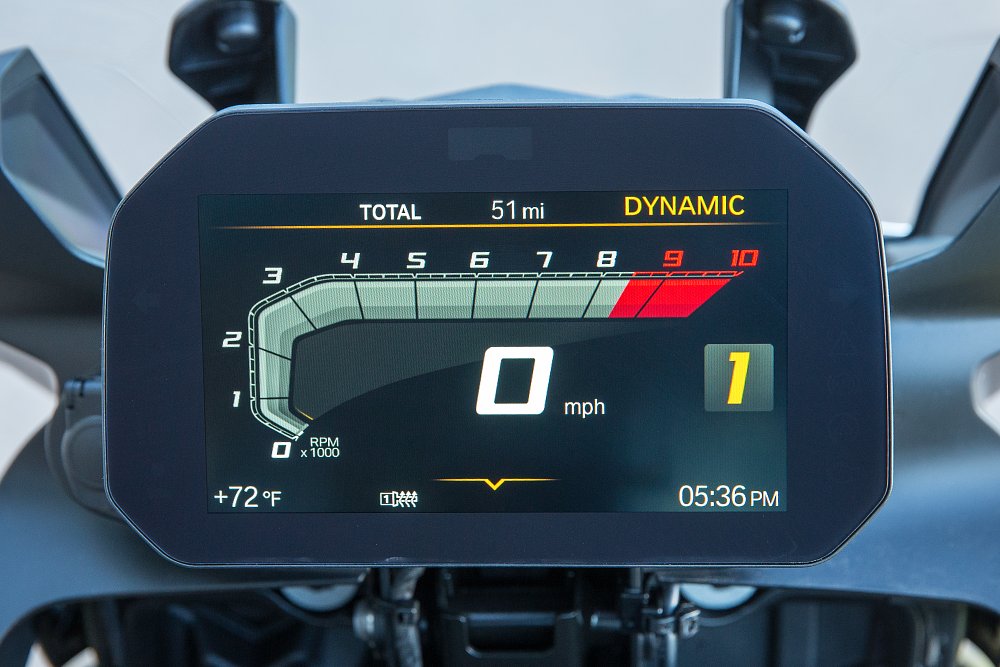
The Select Package on the 750 GS gets the same upgraded TFT dash and Ride Modes Pro (which adds Dynamic and Enduro mode) as the F 850 GS. Each Ride Mode alters throttle response, ABS Pro, Dynamic Traction Control, Dynamic ESA, cruise control, and the Tire Pressure Monitoring system. The biggest difference is the absence of Enduro Pro on the F 750 GS. I found that I preferred riding the 750 in the Dynamic mode pretty much all the time, regardless of road conditions.
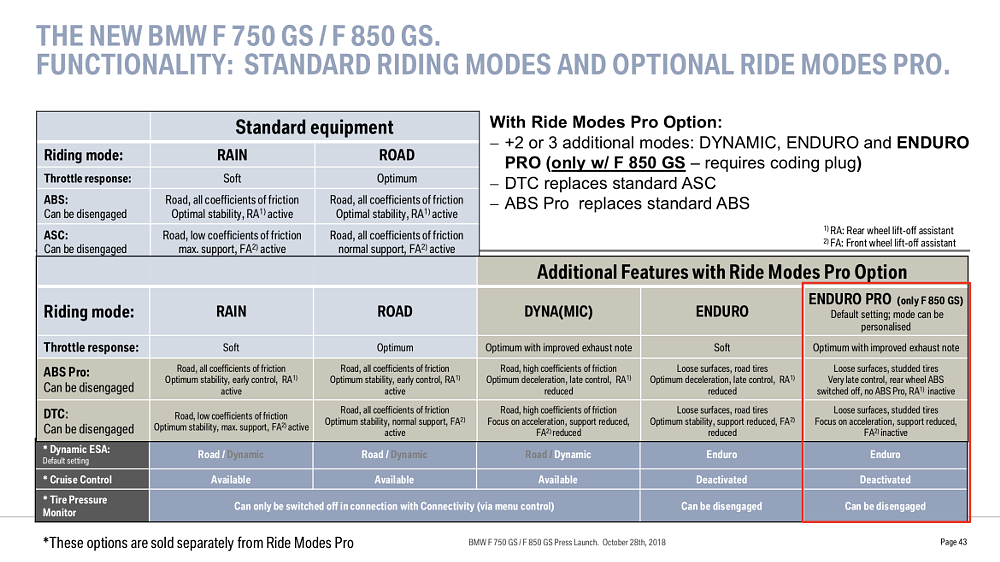
In Dynamic mode, throttle response is at its sharpest, most aggressive setting. That being said, it’s still not nearly as sharp as the Dynamic mode on the F 850 GS. BMW really worked to smooth out the overall grabbiness of the throttle on these bikes. And while I think this will appeal to a good deal of riders looking at this model, it will disappoint anyone who prefers a definitive “snap” from the throttle.
The suspension is significantly different from what is found on the F 850 GS. The front fork is a conventional 41 mm telescopic fork with 5.9 inches of travel (about two inches less than the F 850 GS). As with the 850, there is no adjustment available at the fork.
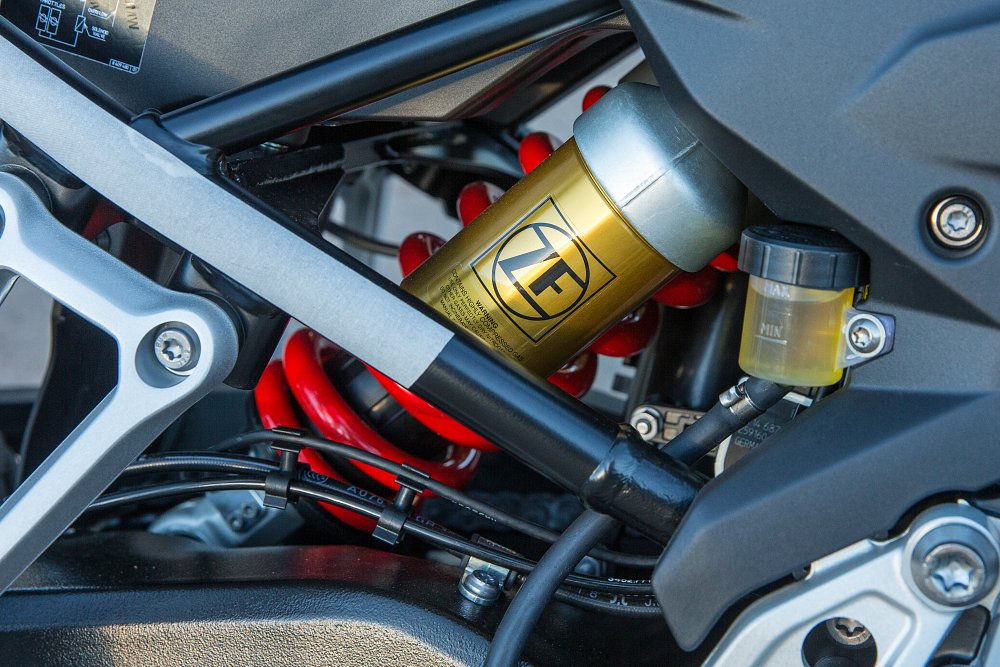
The rear shock is a conventional spring strut design (the F 850 GS utilizes BMW’s progressive-damping WAD design). In base form, there is a manual hydraulic adjustment for preload as well as for rebound damping. Bump to the Premium Package and Dynamic ESA puts rear shock adjustment at your fingertips. Travel at the rear shock is 6.9 inches (about an inch and a half less than the F 850 GS).
Overall ground clearance of 7.5 inches is reduced a little more than two inches when compared the the F 850 GS’s 9.8 inches. The main benefit here is one of the most approachable seat heights in the ADV market. The stock seat height was reduced 0.2 inches from the outgoing F 700 GS to 32.1 inches. Select the low seat option to shave an additional inch or opt for the low seat combined with the lowered suspension to get the seat down to an impressively low 30.3 inches.
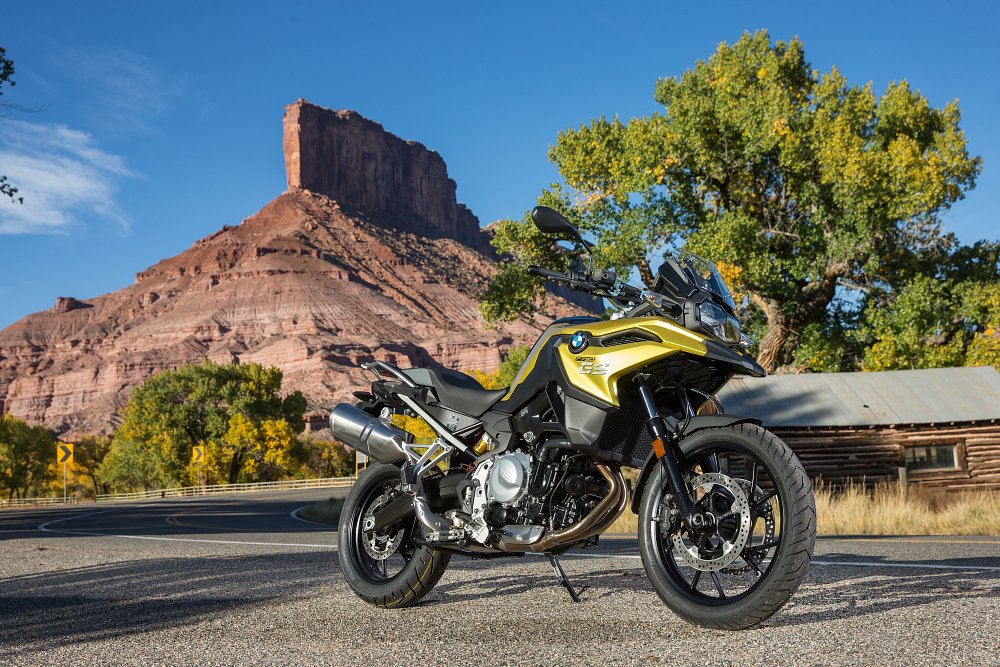
With a full four gallons of fuel, BMW claims a wet weight of 493 pounds, about 11 pounds lighter than the F 850 GS.
While the F 750 GS uses the same Brembo brakes as the 850, they're mounted to different wheels. Whereas the larger, more off-road oriented, F 850 GS receives BMW’s cross-spoke wheels, the F 750 GS receives updated cast aluminum wheels. While the size of the rear tire on both bikes is a 150/70R17, the front tire on the 750 is a more road-oriented 110/80R19. Tires on my bike were the Bridgestone Battlax Adventure A41s, a solid tire for street use, just not the best for providing grip in loose, sandy corners.
Which brings me back to my initial comment to Steve.
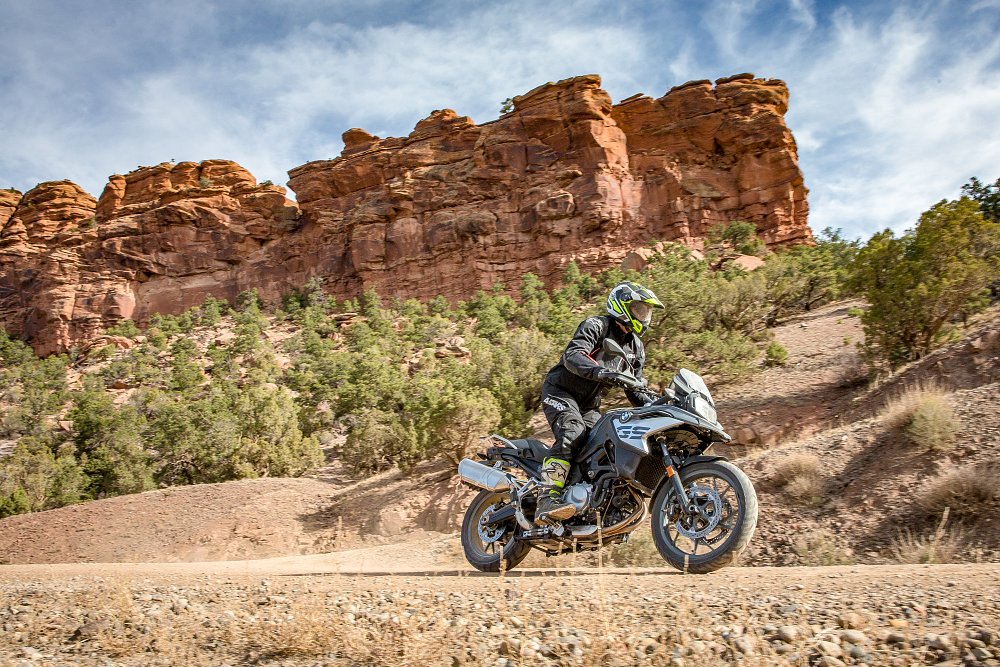
Riding the F 750 GS
BMW brought us Colorado to ride the new F 750 GS and F 850 GS. And while I was expecting (read: hoping) to ride the F 850 GS primarily off-road, I figured we’d be spending most of our time riding the 750 on paved roads. I was wrong.
Within the first five minutes of leaving the Gateway Canyons Resort, the BMW ride leaders had us on a dirt road climbing into the surrounding mountain plateaus. When I told Steve that I hated the bike, I meant that I hated riding the F 750 GS off-road with what are relatively street-oriented tires inflated to full street pressure.
BMW claimed that the 750’s rims have been strengthened over the wheels on the F 700 GS. Despite that, it took me all of about an hour to bend the front wheel on my bike.

The first half of our ride with the F 750 GS was spent chasing one another on hard-packed dirt roads. Steve, whose main ADV mount for the past five years has been a 2012 Tiger 800 roadie, quickly adapted to the bike’s geometry and wheel size and was off chasing the BMW ride leader atop an R 1200 GS Rallye. To me, the front end felt heavy and vague. It required a lot of body input to get it to steer in the direction I wanted to go.
I first tried riding the bike in Enduro mode but soon found the electronics to be too restrictive for my personal taste. I shut traction control off completely and clicked the bike into the Dynamic Ride Mode for a more aggressive throttle response. This helped. But the main thing I struggled with while riding the F 750 GS off-road was being able to reach the shifter and rear brake (the same problem that I faced with the F 850 GS).
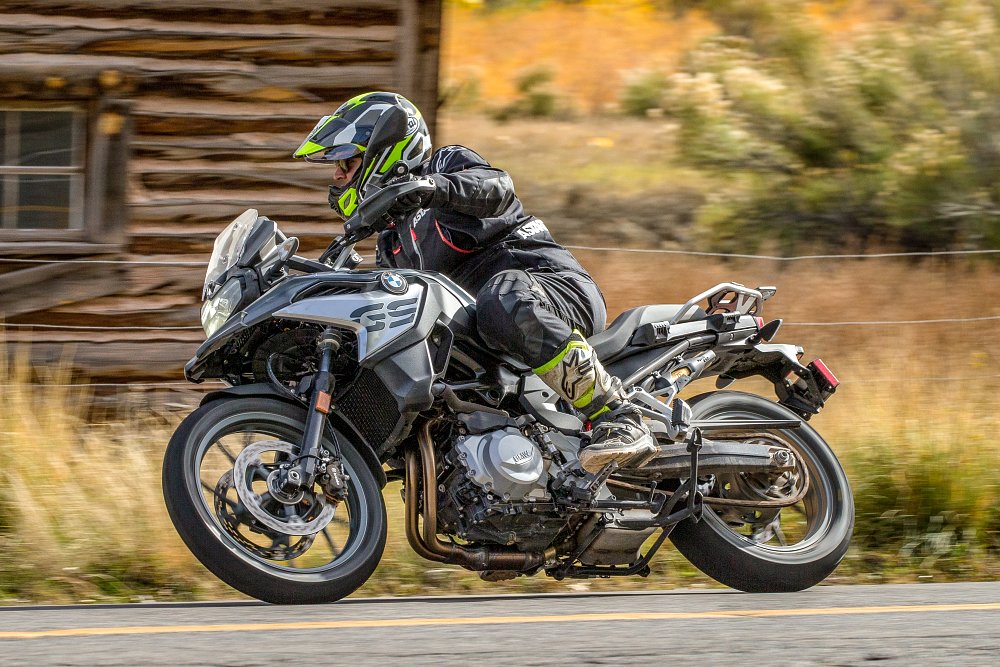
Once we got back to the flowing, Colorado blacktop, this bike came into its own.
I was blown away by how impressively planted and stable this bike feels at excessive highway speeds. At one point I glanced down at the speedo and saw that we were nearing triple digits. The BMW made it feel like we were cruising around 70 mph. I think the shorter suspension and tire selection gave it the advantage here over the F 850 GSes that we tried. I think the 850 would have bested it had it been wearing similar street-oriented rubber, but with that change it would have suffered off-road.
The F 750 GS just felt extremely approachable overall. There was an easy reach to the ground yet it still felt roomy and comfortable for long-haul street riding. The electronics worked flawlessly, the giant TFT dash is extremely clean and easy to read, and the electronic suspension was superb. While I wish the fork was adjustable, I was really impressed with how it was damped in stock form.

The one thing I don’t understand is why BMW decided to cut the power over the F 850 GS. While I didn’t find the F 750 GS to be lacking when I first rode it, the difference in power and throttle response was instantly noticeable as soon as I threw my leg over its bigger brother.
I think it would have made more sense to go the route of Triumph’s Tiger 800. Just as the Tiger 800 XR is a more street-focused middleweight in Triumph’s lineup, the F 750 GS is that bike for BMW. It doesn’t need less power to accomplish the task. Especially when the Tiger 800 XR (arguably the 750’s number-one competitor) welds the same power as its more off-road-focused sibling, the Tiger 800 XC.
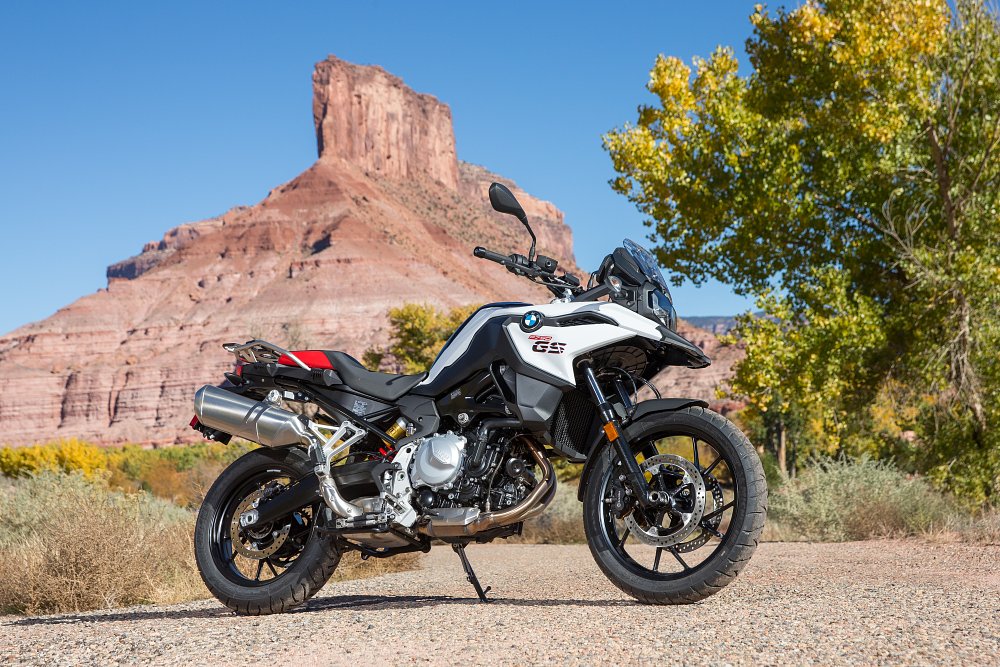
Cost and competition
Technically, the F 750 GS has a MSRP of $10,395. But you can’t walk into a dealer showroom and find one sitting on the floor for that price. BMW Motorrad is importing the F 750 GS with the Select Package as the base offering. Customers can bump to the Premium Package if they so choose, which adds BMW’s Keyless Ride system, an LED element to the headlight, a tire pressure monitoring system, and the Dynamic ESA (or a Low Suspension option).
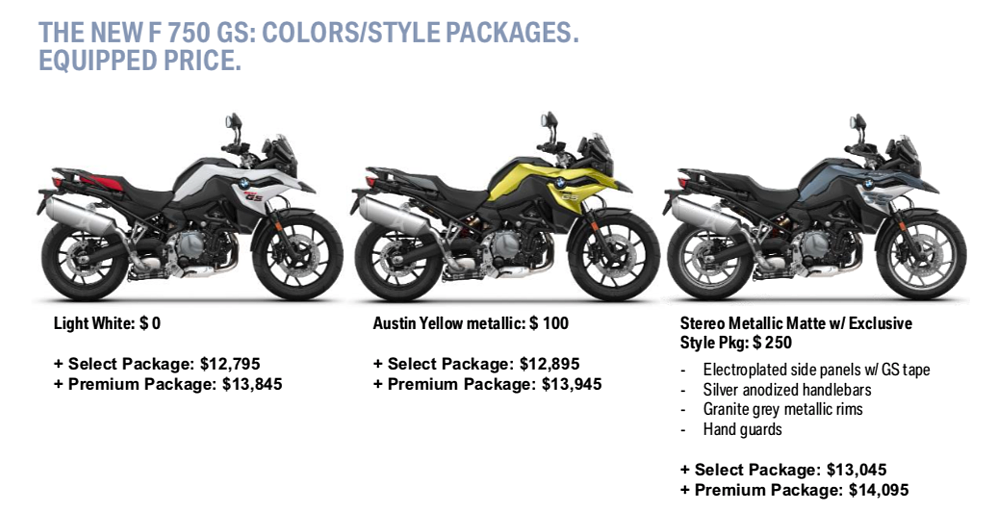
As tested, my bike in the Stereo Metallic Matte paint, with the Exclusive Style package and center stand, came in with a MSRP of $14,270. This represents the top price point for this bike. That’s about $1,000 cheaper than the top-of-the-line Triumph Tiger XRt. If you opt for the Light White paint, skip the center stand and the Premium Package, you’re looking at $12,795. That’s about $800 more expensive than the base Triumph Tiger 800 XR.
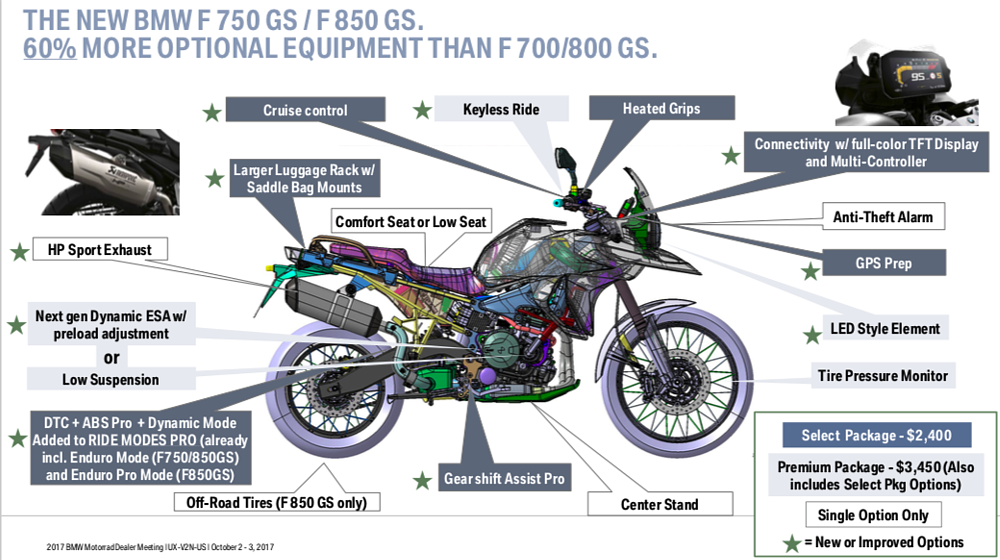
If you’re only considering their overall power, the Tiger will take the BMW. However, if you put that aside for the moment and look at everything else the BMW provides its rider, the comparison shifts a bit in BMW’s favor. I prefer BMW’s electronic suspension and overall refinement to that of the Triumph. If BMW would have bestowed the F 750 GS with the same level of “oomph” as the F 850 GS, I think riders would have a much easier choice on their hands.
You could also argue that budget buyers could be cross shopping the F 750 GS against the 2019 Suzuki V-Strom 650XT Touring. At $9,999 the “Wee Strom” comes standard with luggage, a center stand, crash protection, and tubeless spoked wheels. My counterpoint would be that folks eyeing up a BMW are not budget buyers. The refinement of the 750’s suspension and electronics suite knocks the Suzuki out of the water, if you can afford it.

Conclusion
While I never completely came around to loving the F 750 GS off-road, I didn’t really hate it as much as I said I did in that first experience in the sand. It handled light adventure duty well enough that I wouldn’t hesitate to recommend it to riders looking at dipping their toes into the adventure segment. However, if you’re looking to tackle more miles off-road than on-, this is probably not your bike.
Where this bike really blew me away was with its on-road performance. I was not expecting to like the F 750 GS as much as I did. I think this is an excellent on-road touring machine that can handle any road quite well. From long stretches of fast four-lane highway to curvy two-lane blacktop, this bike had me grinning.
For riders who want a tech-heavy, ADV touring bike that can tackle long days in the saddle with ease, the F 750 GS is an excellent option to consider. I just wouldn’t plan on going too far off-road, lest you find yourself hating your decision.
| 2019 BMW F 750 GS | |
|---|---|
| Price (MSRP) | $14,270 (as tested) |
| Engine type | Liquid-cooled, two-cylinder, DOHC, four valves per cylinder, and dry sump lubrication |
| Displacement | 853 cc |
| Bore x stroke | 84 mm x 77 mm |
| Compression | 12.7/1 |
| Power (claimed) | 77 horsepower @ 7,500 rpm |
| Torque (claimed) | 61 foot-pounds @ 6,000 rpm |
| Transmission | Six-speed |
| Front suspension | 41 mm Telescopic fork |
| Rear suspension | Directly mounted central spring shock with hydraulic preload and rebound, optional Dynamic ESA shock |
| Suspension travel front/rear | 5.9 inches / 6.9 inches |
| Front brake | Two-piston, Brembo calipers |
| Rear brake | One-piston caliper |
| Tires front/rear | 110/80R19; 150/70R17 Bridgestone Battlax Adventure A41 (as tested) |
| Rake | 27 degrees |
| Trail | 4.1 inches |
| Wheelbase | 61.4 inches |
| Seat height | 30.3 - 32.6 inches (depending on seat and suspension configuration) |
| Tank capacity | 4 gallons |
| Wet weight (claimed) | 493 pounds |




















